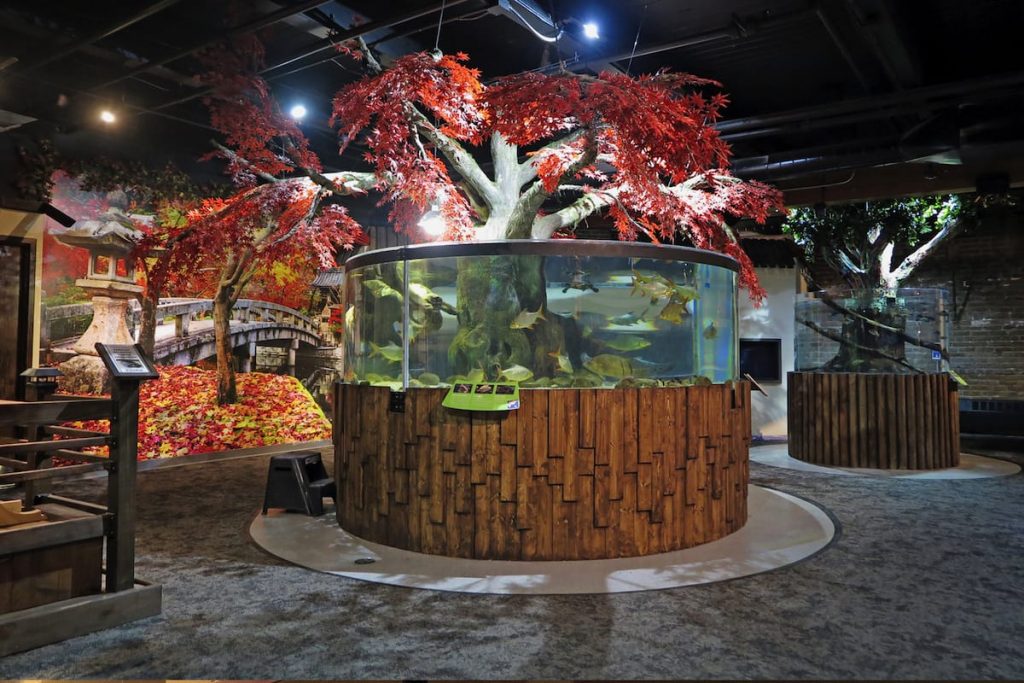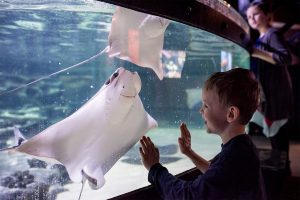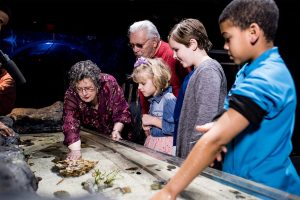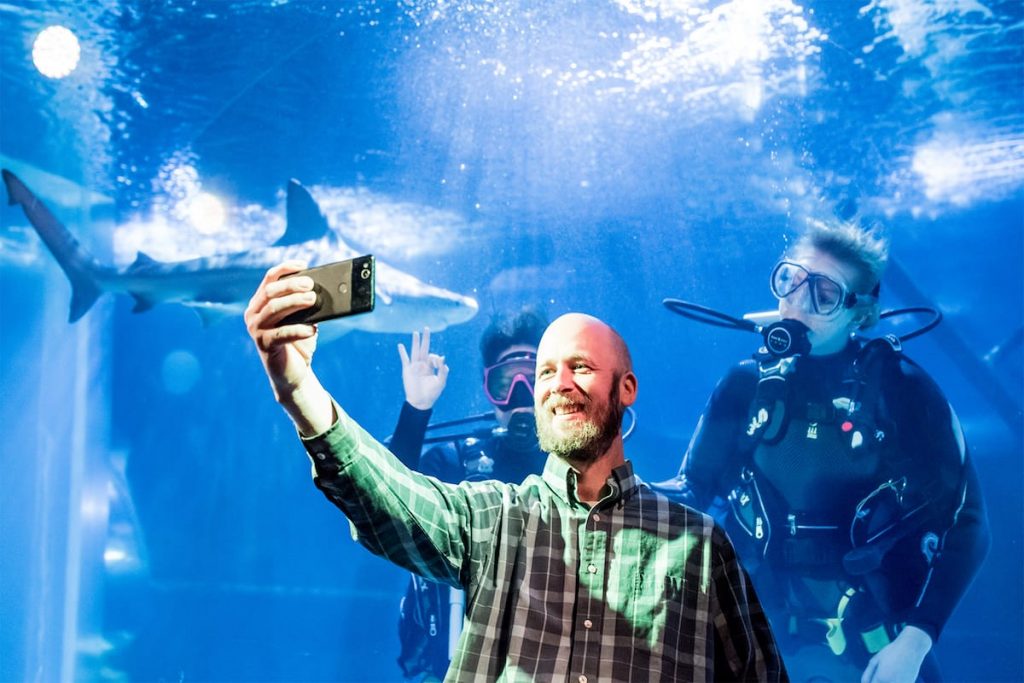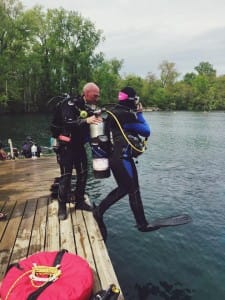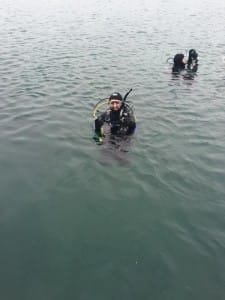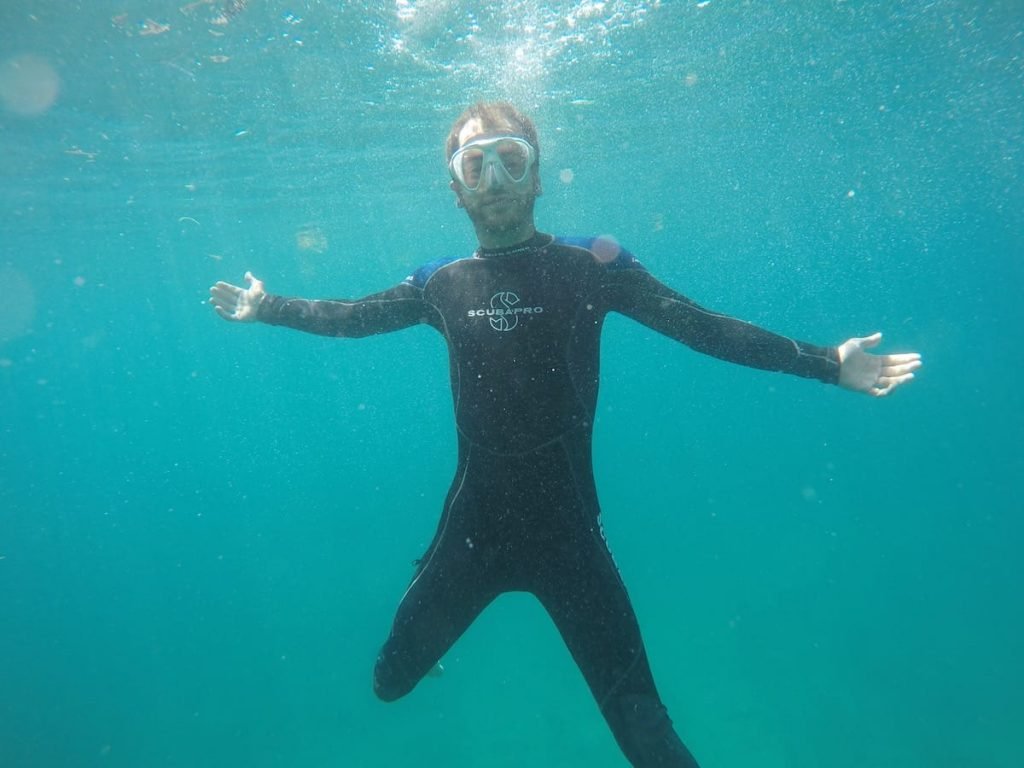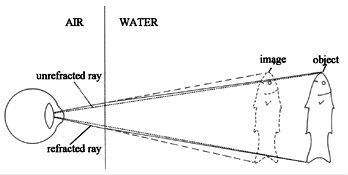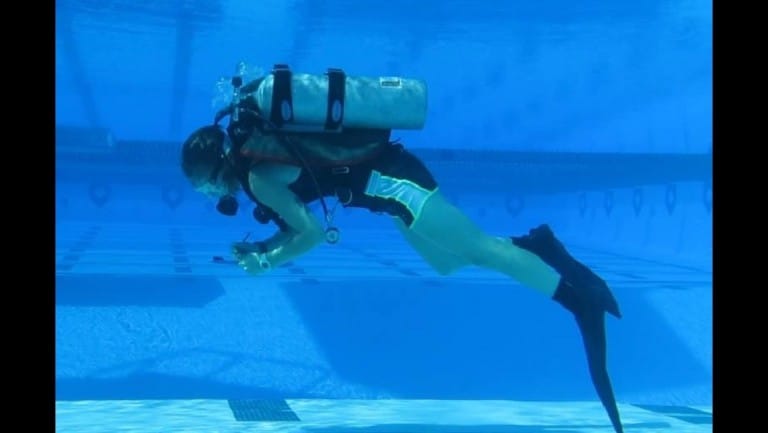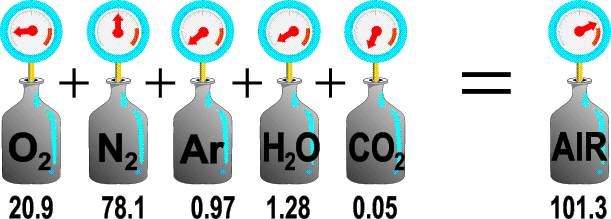Best Places to Dive: USAT Liberty – Tulamben, Bali, Indonesia
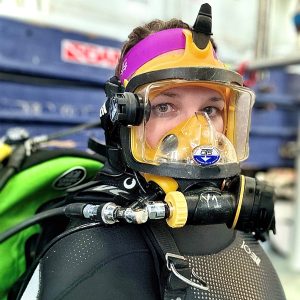 Just eight degrees south of the equator and nearly 10,000 miles from Cleveland, the island of Bali is a province of Indonesia and lies within the Coral Triangle, an area of immense biodiversity between the Pacific and Indian Oceans.
Just eight degrees south of the equator and nearly 10,000 miles from Cleveland, the island of Bali is a province of Indonesia and lies within the Coral Triangle, an area of immense biodiversity between the Pacific and Indian Oceans.
While most travelers are drawn to South Bali shopping and beaches, Greater Cleveland Aquarium Dive Safety Coordinator Halle Minshall says that the small town of Tulamben on the northeast side of the island by the Lombok Straight has one of her favorite dives – the wreck of the USAT Liberty.
“The wreck is accessed as a beach dive and the beach has black sand as it is a volcanic beach,” says Halle. Tulamben sits on the side of a volcano, Mount Agung.
The USAT Liberty bridged two World Wars as a US Army cargo ship. Notable as the first ship constructed at Federal Shipbuilding in Kearny, New Jersey in 1918, she arrived with her first cargo of horses in France three days before the end of World War I. Recommissioned in World War II, she was torpedoed by a Japanese submarine and limped to the coast of Bali where her captain beached her so that her cargo could be salvaged. In 1963, an eruption on Mount Agung on Bali finished what the war could not when tremors sent the wreck sliding beneath the waves. Now lying just offshore of Tulamben, the Liberty hosts a wide variety of microfauna, including pigmy seahorses.
“The wreck is well encrusted in marine life and infamous for pigmy seahorses, although I didn’t see any. I did see an enormous number of nudibranch on this dive site and found the diversity fascinating,” Halle recalls. “The beds of garden eels were something I have never experienced anywhere else. The contrast of the black sand and the vivid colors of the corals and fish make this location very memorable and with its unique story, something I’ll never forget.”
Halle has been diving since 2001 and lived and worked for a time as a scuba instructor in Phuket, Thailand. She has served as the Aquarium’s Dive Safety Coordinator since its opening in 2012.
The wreck of the Liberty rests just 100 feet from shore and at its highest point reaches to about 15 feet under the waves. Its deepest point lies 100 feet deep, making it accessible to beginning divers. In a part of the world with such immense dive opportunity, this site is notable that it stood out for one of the Aquarium’s most experienced divers.
USAT Liberty is the fourth in our weekly series of the Aquarium dive team’s favorite dive locations. Stay tuned for the rest of our list or suggest somewhere new we might want to explore.
- Ray D.

